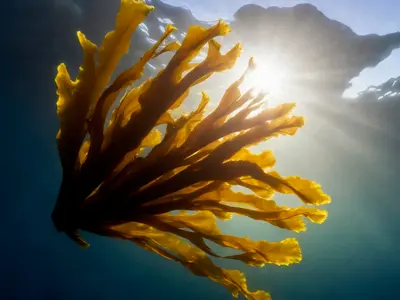
Team DiSEEM - Dispersal, Speciation and Evolution of Marine Species
The DiSEEM team studies connectivity between populations of marine organisms at different spatial scales and its consequences on evolutionary processes: in particular, adaptation to environmental heterogeneity, the evolution of reproductive isolation between populations, and the long-term evolution of reproductive systems and thermotolerance in marine organisms.
Presentation
We work on various biological models from intertidal, coastal, and deep-sea environments (mainly invertebrate species) that are relevant to our research topics, and use a variety of complementary approaches:
- methods based on geochemical tracers and sclerochronology of larval shells to study the dispersal of bivalves and gastropods
- hydrodynamic modeling of larval dispersion to infer connectivity between populations
- population genetics and genomics to explore intraspecific diversity and the genetic basis of reproductive isolation between species
- ancestral reconstruction and biochemical analyses of proteins to study adaptation to extreme environments
- theoretical population genetics to study the evolutionary forces affecting the evolution of reproductive systems
Axis 1: Larval dispersal, connectivity, and population resilience
- Resilience of hydrothermal populations in the face of deep-sea mining: connectivity and adaptability of populations
- Dispersion of non-native species and contribution to coastal meroplankton dynamics
Axis 2: Adaptation to heterogeneous marine environments
- Adaptation of deep-sea hydrothermal species proteins to temperature and hydrostatic pressure
- Adaptation of species to urbanized marine ecosystems (ports), local adaptation of intertidal species along the shore
Axis 3: Speciation genomics
- Role of chromosomal rearrangements and sex chromosomes in reproductive isolation
- Evolution of sexual isolation
- Effect of recolonization dynamics on speciation processes
Projects: sexual isolation
Axis 4: Evolution of reproductive systems and genetic architecture
- Evolution of sex and life cycles
- Evolution of recombination landscapes
- Evolution of sex chromosomes and dosage compensation
Projects: evolution of sexual systems, recLandscapes
Contact(s)
- Thierry Comtet
- Denis Roze
Projects
People






Publications
Sex chromosomes and chromosomal rearrangements are key to behavioural sexual isolation in Jaera albifrons marine isopods
Ambre Ribardiere, Claire Daguin-Thiebaut, Jerome Coudret, Gildas Le Corguille, Komlan Avia, et al.. Sex chromosomes and chromosomal rearrangements are key to behavioural sexual isolation in Jaera albifrons marine isopods. 2025. ⟨hal-04923366⟩
A single theory for the evolution of sex chromosomes and the two rules of speciation
Thomas Lenormand, Denis Roze. A single theory for the evolution of sex chromosomes and the two rules of speciation. Science, 2025, 389, pp.eado9032. ⟨10.1126/science.ado9032⟩. ⟨hal-04736667⟩
A Long‐Term Ecological Research Data Set From the Marine Genetic Monitoring Program ARMS ‐ MBON 2018–2020
Nauras Daraghmeh, Katrina Exter, Justine Pagnier, Piotr Balazy, Ibon Cancio, et al.. A Long‐Term Ecological Research Data Set From the Marine Genetic Monitoring Program ARMS ‐ MBON 2018–2020. Molecular Ecology Resources, 2025, ⟨10.1111/1755-0998.14073⟩. ⟨hal-04968427⟩
An Evolutionary Mosaic Challenges Traditional Monitoring of a Foundation Species in a Coastal Environment—The Baltic Fucus vesiculosus
Ricardo Pereyra, Alexandra Kinnby, Alan Le Moan, Olga Ortega-Martinez, Per Jonsson, et al.. An Evolutionary Mosaic Challenges Traditional Monitoring of a Foundation Species in a Coastal Environment—The Baltic Fucus vesiculosus. Molecular Ecology, 2025, ⟨10.1111/mec.17699⟩. ⟨hal-04968495⟩
Comparative population genomics unveils congruent secondary suture zone in Southwest Pacific Hydrothermal Vents
Adrien Tran Lu Y, Stéphanie Ruault, Claire Daguin-Thiébaut, Anne‐sophie Le Port, Marion Ballenghien, et al.. Comparative population genomics unveils congruent secondary suture zone in Southwest Pacific Hydrothermal Vents. Molecular Biology and Evolution, 2025, 42 (2), pp.msaf024. ⟨10.1093/molbev/msaf024⟩. ⟨hal-04973623v2⟩
Alpha and beta diversities of hydrothermal vent macrofaunal communities along the southwestern Pacific back-arc basins
Camille Poitrimol, Éric Thiébaut, Cédric Boulart, Cécile Cathalot, Olivier Rouxel, et al.. Alpha and beta diversities of hydrothermal vent macrofaunal communities along the southwestern Pacific back-arc basins. Science of the Total Environment, 2025, 967, pp.178694. ⟨10.1016/j.scitotenv.2025.178694⟩. ⟨hal-04973664⟩






